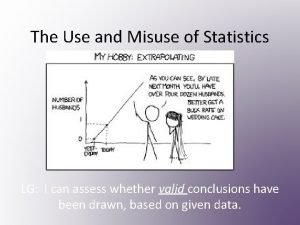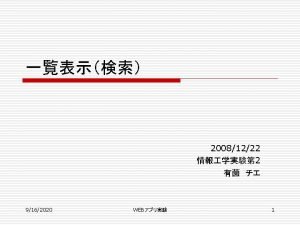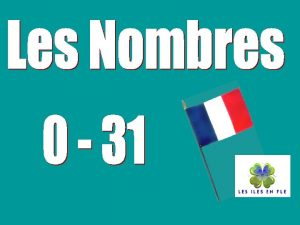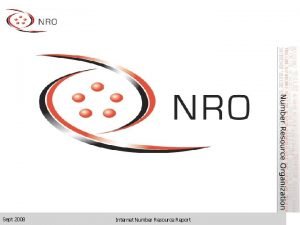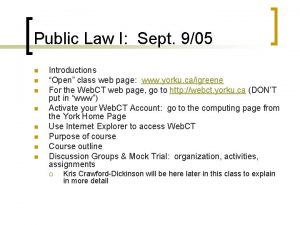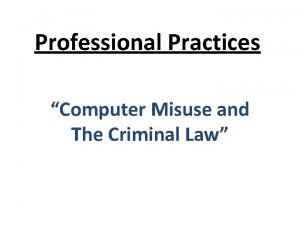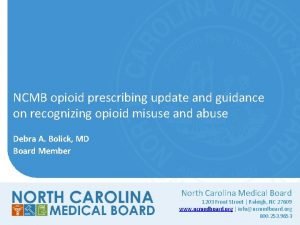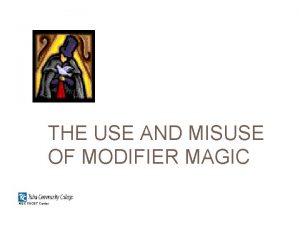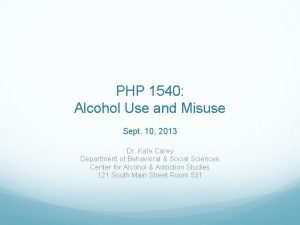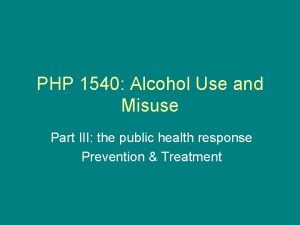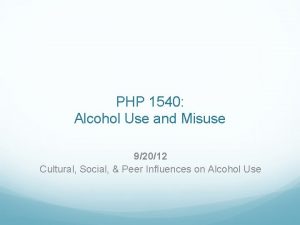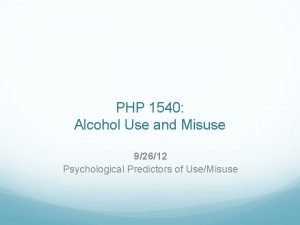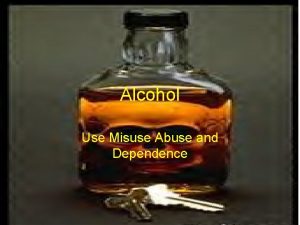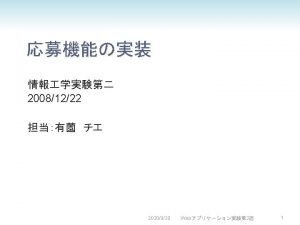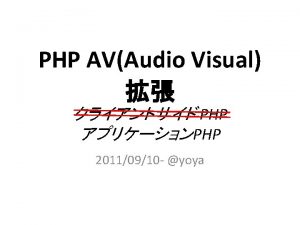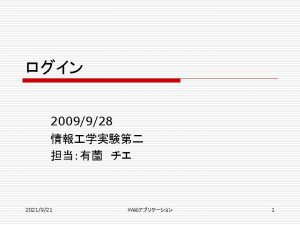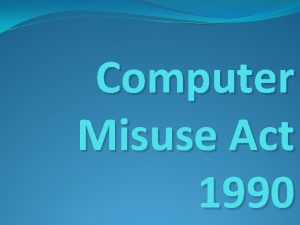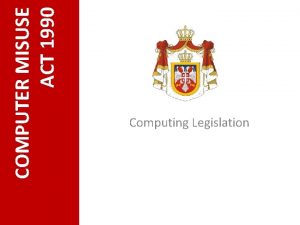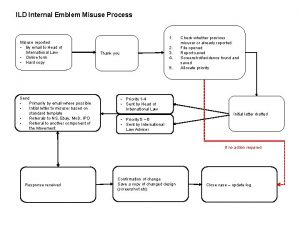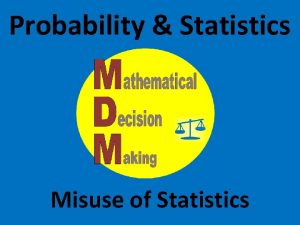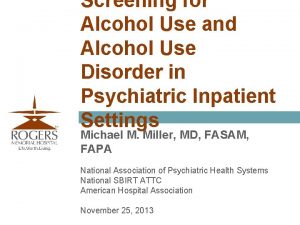PHP 1540 Alcohol Use and Misuse Sept 12























- Slides: 23

PHP 1540: Alcohol Use and Misuse Sept. 12, 2012 Dr. Kate Carey Department of Behavioral & Social Sciences Center for Alcohol & Addiction Studies 121 South Main Street Room 531

Continuum of Symptom Severity daily drinking < -----------> occasional heavy drinking yellow = abuse symptoms; orange = dependence symptoms larger amounts inability to quit/control hazardous use tolerance withdrawal use despite physical/psychological problems social/interpersonal problems time spent obtaining/recovering neglect important roles activities given up legal problems

Diagnostic and Statistical Manual of Mental Disorders (DSM) DSM-IV specified 2 disorders: Alcohol Abuse Alcohol Dependence DSM-5 revisions published in May 2013 proposed a single Alcohol Use Disorder Why? No logical sequence of sx from abuse to dependence Reliability of DSM-IV Alcohol Abuse was not good Psychometric studies revealed a unidimensional structure, with items that could be ordered along a severity dimension

From: DSM-5 Criteria for Substance Use Disorders: Recommendations and Rationale Am J Psychiatry. 2013; 170(8): 834 -851. doi: 10. 1176/appi. ajp. 2013. 12060782 Figure Legend: DSM-IV and DSM-5 Criteria for Substance Use Disorders a One or more abuse criteria within a 12 -month period and no dependence diagnosis; applicable to all substances except nicotine, for which DSM-IV abuse criteria were not given. b Three or more dependence criteria within a 12 -month period. c Two or more substance use disorder criteria within a 12 -month period. Date of download: 9/4/2013 Copyright © American Psychiatric Association. All rights reserved.

DSM-V revisions to diagnostic criteria Alcohol Use Disorder requires at least 2 (of 11) criteria occurring within 12 months Severity specifier 2 -3 criteria = mild disorder 4 -5 moderate disorder 6+ = severe disorder

Common correlates of alcohol dependence Mood changes: Medical problems: depression, anxiety, guilt accidents malnutrition, GI Social problems: underemployment, financial problems, family conflict, interpersonal/social, legal, generalized stress disturbance cognitive impairment cancers muscle wasting cardiac problems peripheral neuropathy liver dysfunction

Course of drinking Onset in teens/20’s Over time quantity down, frequency up Variable: no standard progression “maturing out” with onset of adult roles Drinking patterns/problems changeable

Course of AUDs Chronic drinking -> physical consequences; psychosocial consequences at any time Subset w/ chronically relapsing disorder Change/recovery may be treatment-facilitated change or self-initiated Resolutions: Death Continuous AUDs Abstinence Controlled, nonproblem drinking

Drinking Patterns in the US

Spectrum of drinkers and consequences

Defining harmful drinking High volumes: drinking too much too fast “binge” = a pattern of drinking alcohol that brings BAC to. 08 g% or above Over 2 hours: Males: 5 or more SDs Females: 4 or more SDs “Heavy drinking” = 5/4+ on one occasion used in surveys to determine risky drinking “At risk” drinking: >14 drinks/wk for men >7 drinks/wk for women

What is “Low-Risk” Drinking? no more than 7 drinks/week for most women No more than 3 drinks/day no more than 14 drinks/week for most men No more than 4 drinks/day Who should NOT drink this much? Women who are pregnant or trying to conceive People taking medication or with medical conditions People planning to drive Recovering alcoholics Children and adolescents

Epidemiology: the systematic study of the rates, distribution, causes, and consequences of physical disease and mental disorders in a population.

Epidemiology terms to know. . . Incidence Prevalence point prevalence lifetime prevalence

Some reasons why is it useful to know about incidence & prevalence Allocation of $ resources Cross cultural comparisons Determination of the need for research Evaluation of the effects of public health/policy measures

July 30, 2010 U. S. Drinking Rate Edges Up Slightly to 25 -Year High Beer remains beverage of choice for drinkers by Frank Newport

Epidemiological data on drinking: National Survey on Drug Use and Health (NSDUH) Ø annual, random sample of ~70, 000 Ø https: //nsduhweb. rti. org/ National Epidemiologic Survey on Alcohol and Related Conditions (NESARC) Ø 2 waves (02 -03, 04 -05), >43, 000 Ø http: //pubs. niaaa. nih. gov/publications/NESARC_DRM/NESARCD RM. htm

More sources for epi data on drinking: Monitoring the Future Survey Ø annual sample of 8 th, 10 th, 12 th graders; college students Ø http: //monitoringthefuture. org/ Behavioral Risk Factor Surveillance System (BRFSS): Ø Annual, by state Ø http: //www. cdc. gov/brfss/index. htm

Figure 3. 1 Current, Binge, and Heavy Alcohol Use among Persons Aged 12 or Older, by Age: 2010 NSDUH

Figure 3. 2 Current, Binge, and Heavy Alcohol Use among Persons Aged 12 or Older, by Race/Ethnicity: 2010 NSDUH

Prevalence of Binge Drinking in US by Age, 2010 30 25 20 17% overall prevalence 15 10 5 0 18 -24 25 -34 35 -44 45 -64 (MMWR, Vol. 61, January 10, 2012) >=65

Prevalence of Alcohol Use Disorders: 1 -year and lifetime prevalence 1 -year lifetime 8. 5% 30. 0% alcohol abuse 4. 7% 17. 8% alcohol dependence 3. 8% 12. 5% Any AUD Hasin et al. (2007) According to Hasin et al. (2007), the prevalence of AUDs varies significantly by. . .

Towards understanding the etiology of alcohol problems. . . Etiology = the study of the cause or origins Anticipating next class: What did your culture/ethnic origins teach YOU about drinking ? - What was acceptable? - What was not? - For whom?
 Use and misuse of statistics
Use and misuse of statistics Mil-std-1540
Mil-std-1540 Chapter 3 the european period vocabulary
Chapter 3 the european period vocabulary Epoxide reaction with grignard reagent
Epoxide reaction with grignard reagent Ketone to tertiary alcohol
Ketone to tertiary alcohol Web.facebook.com.php
Web.facebook.com.php Php php://input
Php php://input Un deux trois quatre cinq six sept huit neuf dix
Un deux trois quatre cinq six sept huit neuf dix Deportes
Deportes La guerre de sept ans
La guerre de sept ans Cities on hills
Cities on hills Poesie le dernier sapin de truchi
Poesie le dernier sapin de truchi Ecrivez les sept jours de la semaine
Ecrivez les sept jours de la semaine Sept commandements
Sept commandements Cnn 10 september 1 2021
Cnn 10 september 1 2021 Sept heure moins le quart
Sept heure moins le quart Damon poole
Damon poole Suture to stabilize suffix
Suture to stabilize suffix Sept
Sept I sept
I sept Sept comme setteur questionnaire
Sept comme setteur questionnaire Computer misuse and criminal law pdf
Computer misuse and criminal law pdf Nccsrs
Nccsrs What is a modifier in a sentence
What is a modifier in a sentence
